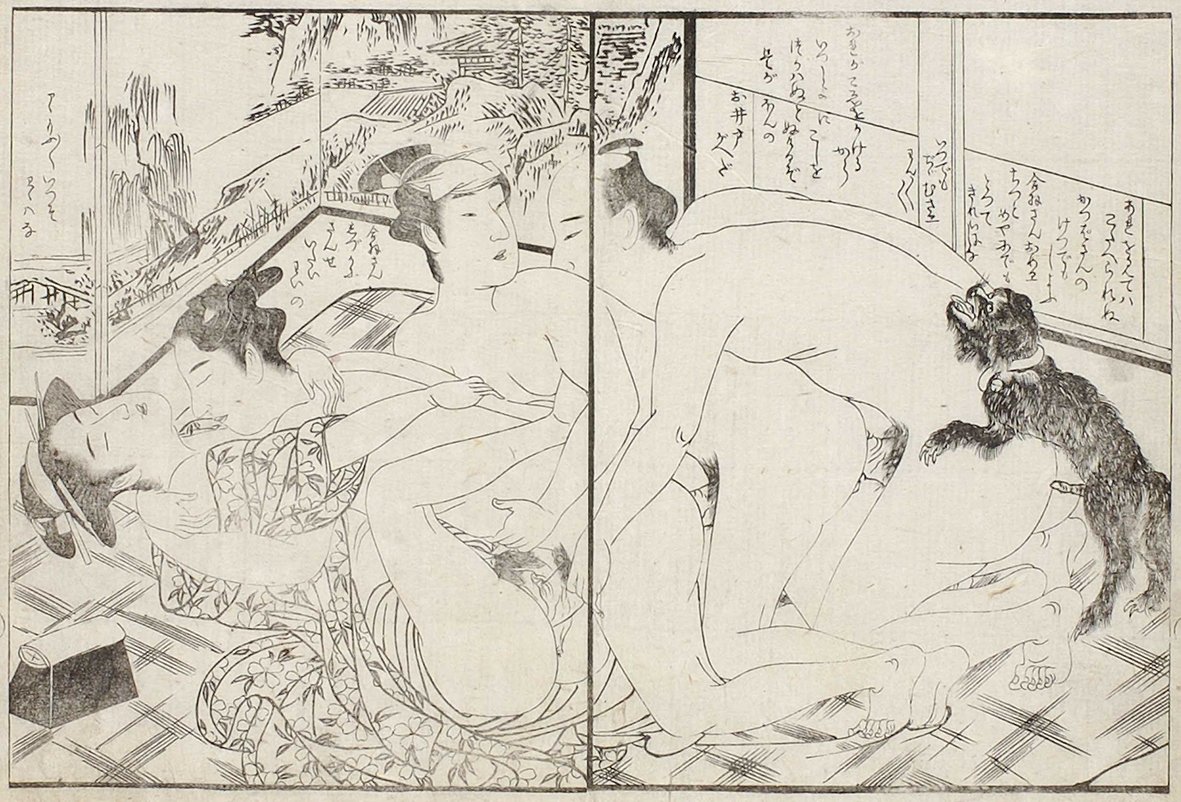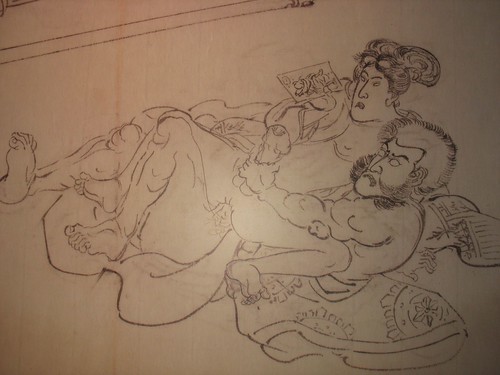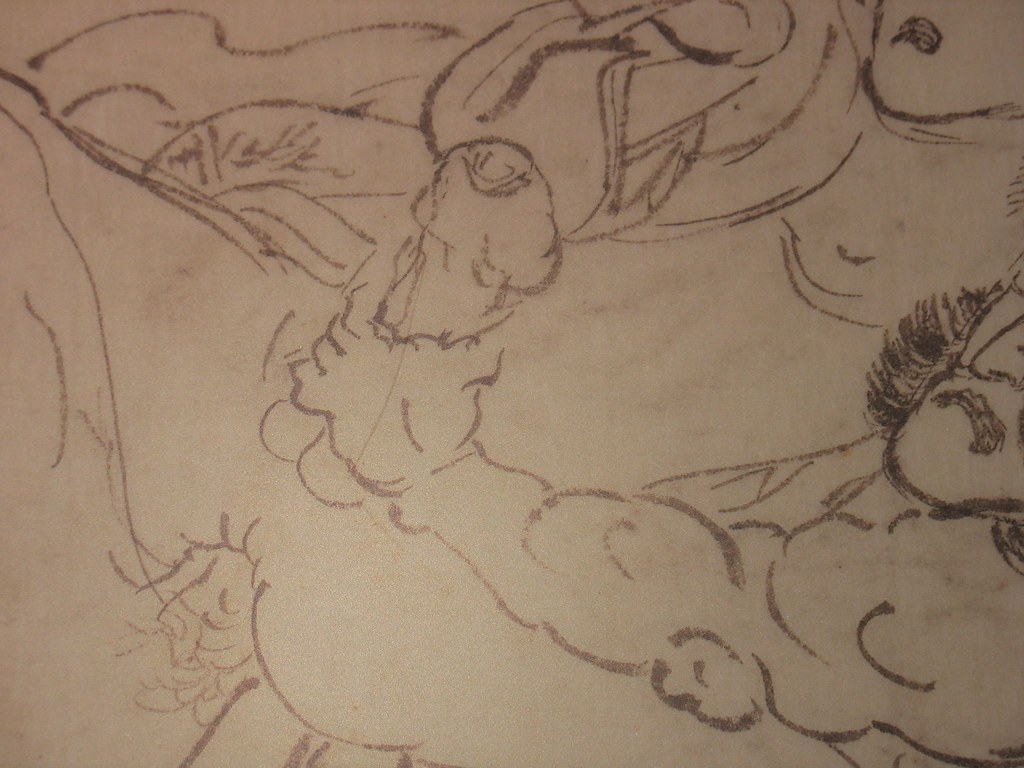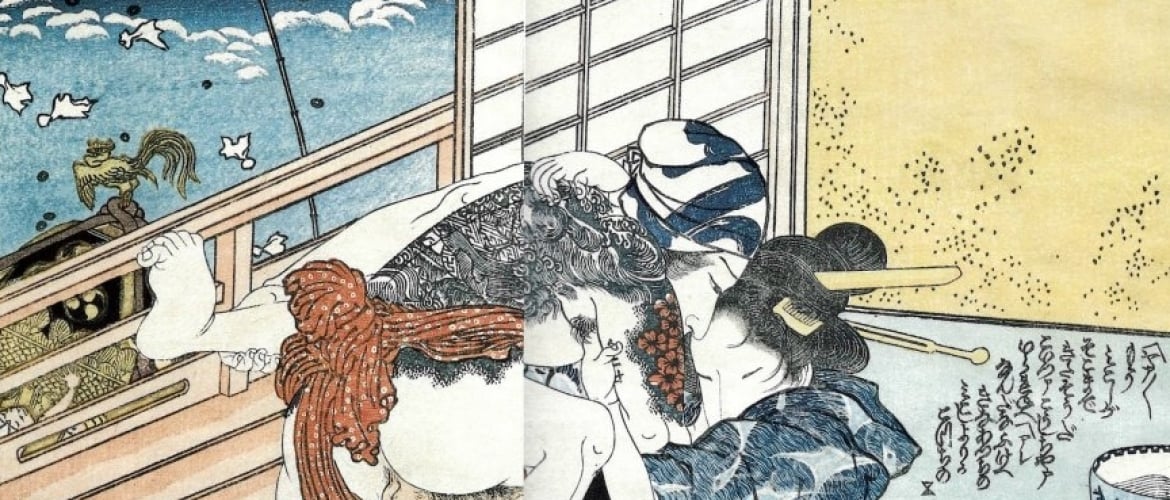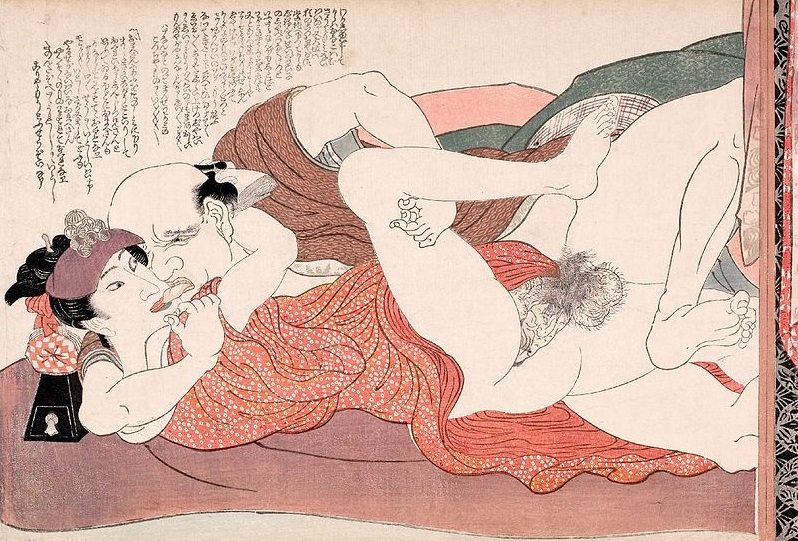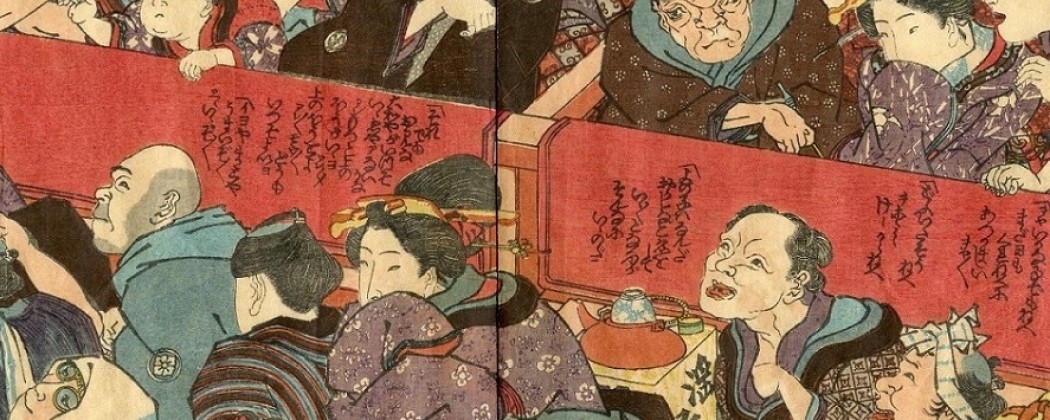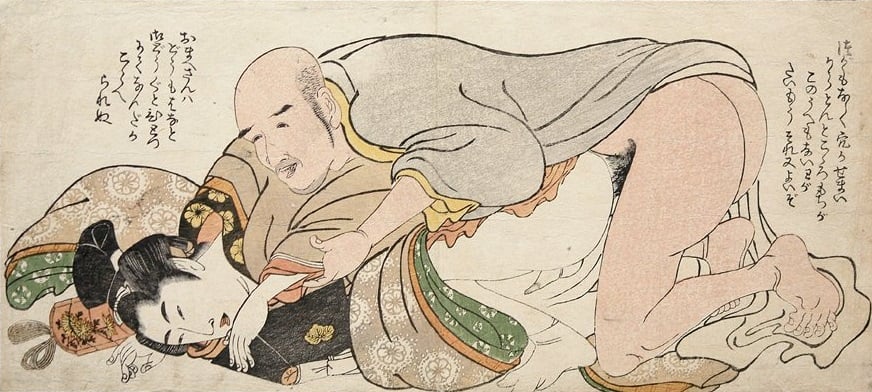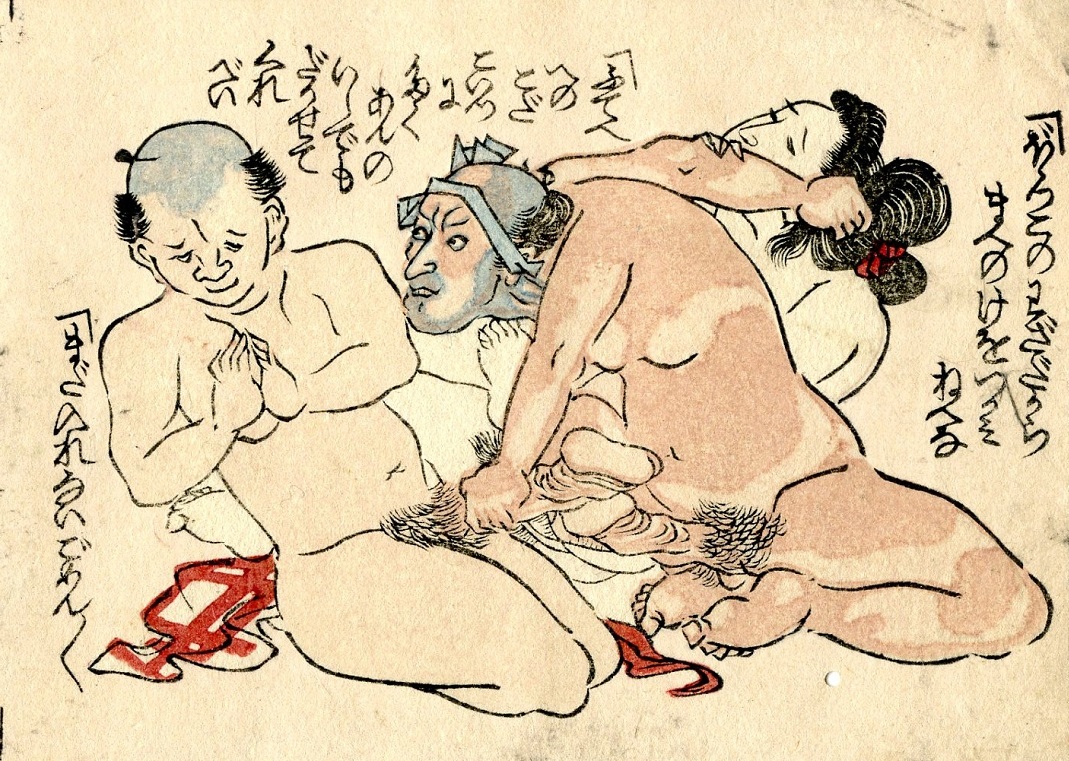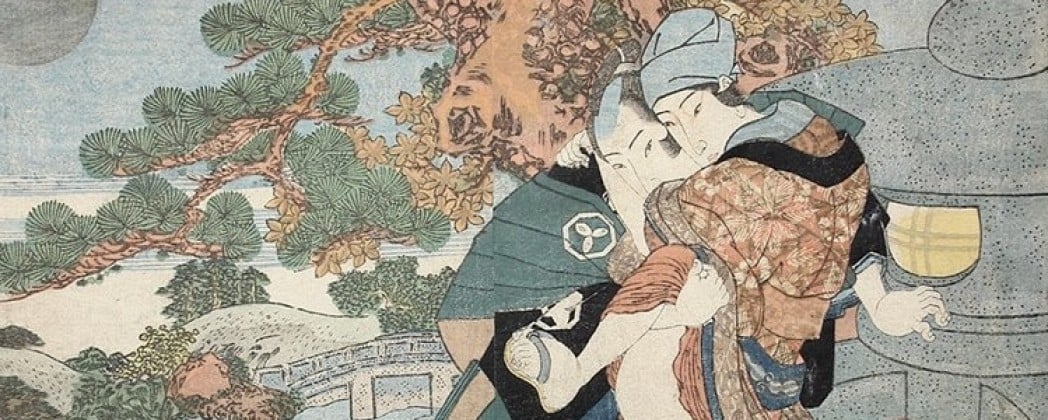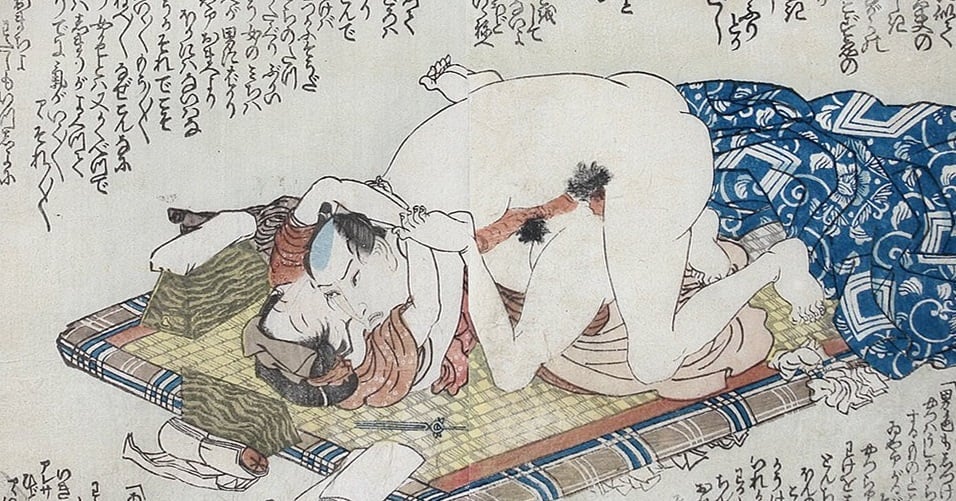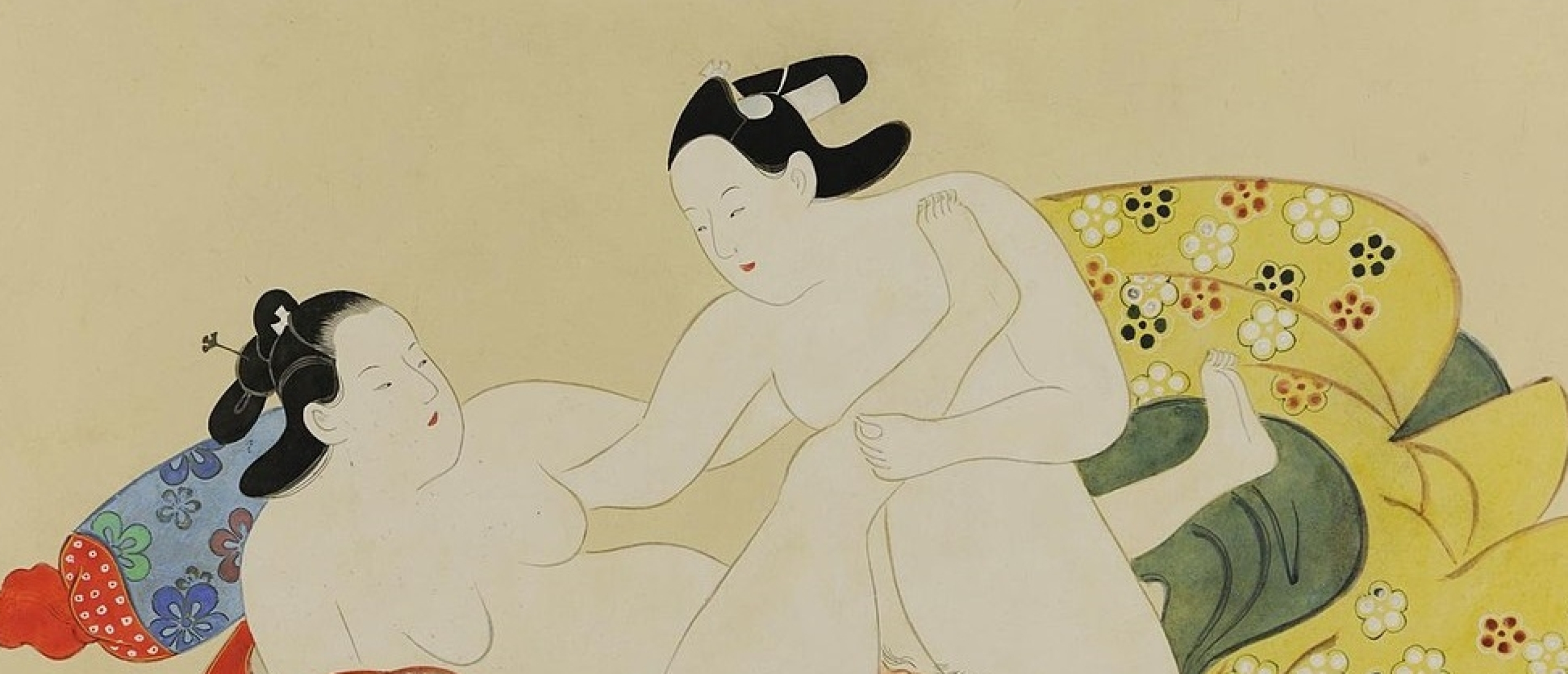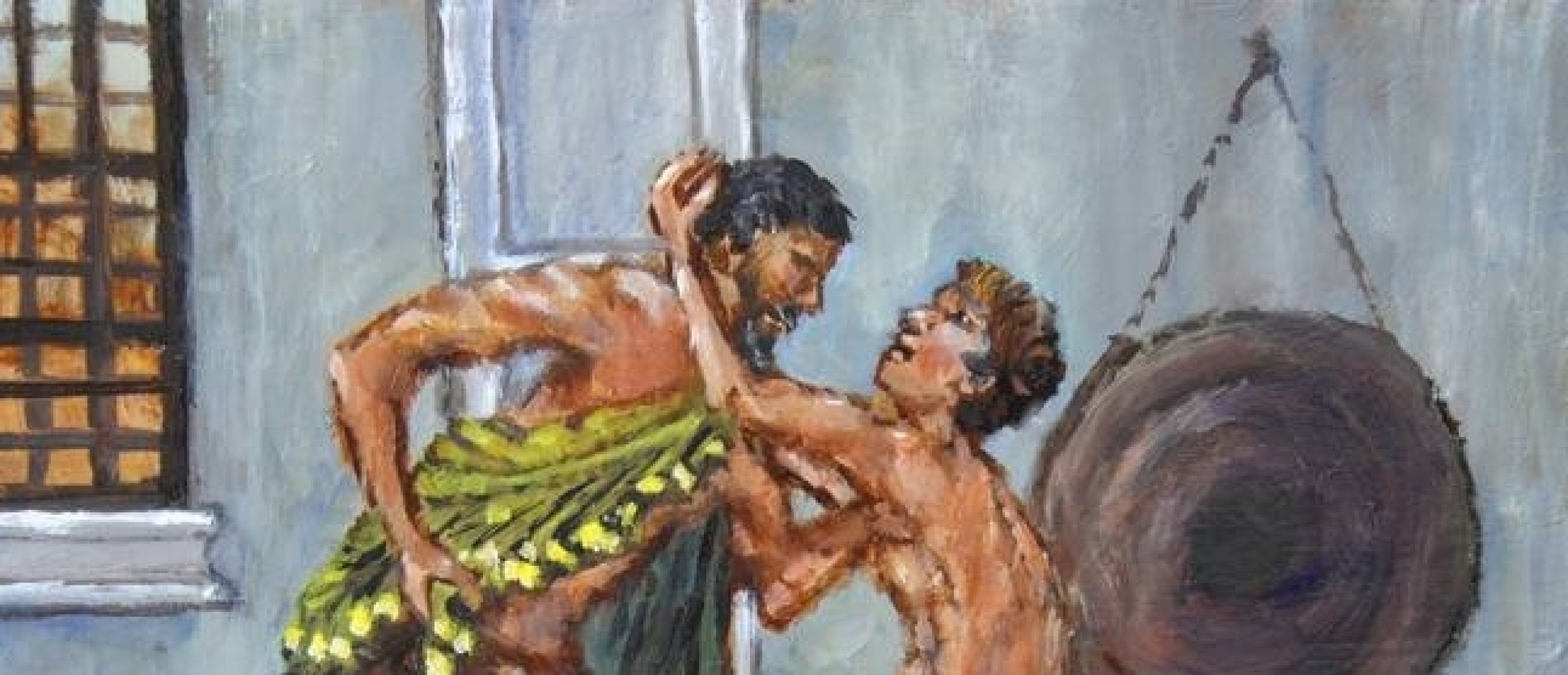
Kabuki actors were the stars and celebrities of the ukiyo-e world and were the subject of much scandal and satire in shunga. Originally female actresses performed in kabuki too, but they were banned in 1692 because they also worked as prostitutes to provide money for themselves and for the theatres (see picture below!).

‘A young wakashu kabuki actor and older male lover‘ (c.1838) from the series ‘Chinpen shinkeibai’ by Utagawa Kuniyoshi (1797-1861)
Wakashu Kabuki
From then on, certain male actors (onnagata) also known as wakashu kabuki actors played women’s roles and presented a source of sexual attraction for some male fans. So some homosexual scenes in late Edo-period shunga include kabuki actors dressed as women, though mostly these were in the form of satires. Gossip about aristocratic ladies who slept with kabuki actors was also published in the form of shunga parodies.
Brimless Caps
While adult men (yaro) shaved the tops of their heads completely, wakashu shaved only the back half of their heads, and their forelocks remained intact. Frequently wakashu covered the tops of their heads with brightly (often purple) colored, brimless caps. They were also discernible by their long-sleeved kimonos.
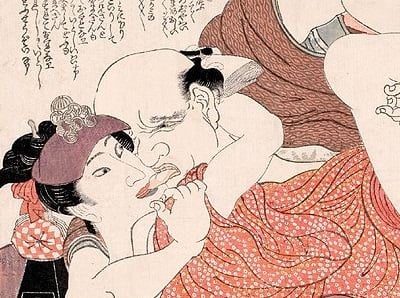
Excerpt of Plate 8 from the series ‘Willow Storm (Yanagi no arashi)‘, late 1820s by Yanagawa Shigenobu (1787-1833).
From Wakashu to Yaro
Wakashu were known to have relations with both women and mature men. Since age was a primary determinant in a wakashu‘s gender, his “coming-of-age” ritual at age nineteen, during which his forelocks were completely shaven, actually symbolized his change in gender from wakashu to yaro.
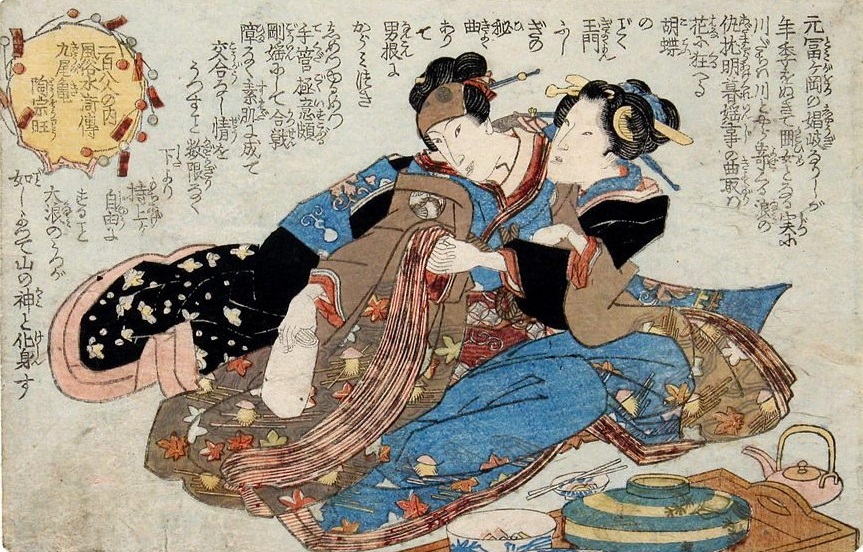
‘Wakashu kabuki actor with an experienced geisha‘ (c.1830) attributed to Utagawa Kunisada (1786-1865)
Click HERE for more designs featuring gay encounters !
Sources:
‘Japanese Erotic Art: The Hidden World of Shunga‘ by Ofer Shagan
‘Shunga, Stages of Desire‘ published by the Honolulu Museum of Art
*(Dog) “I’ve never seen such an insane insight. Why even I can’t resist joining in.”

